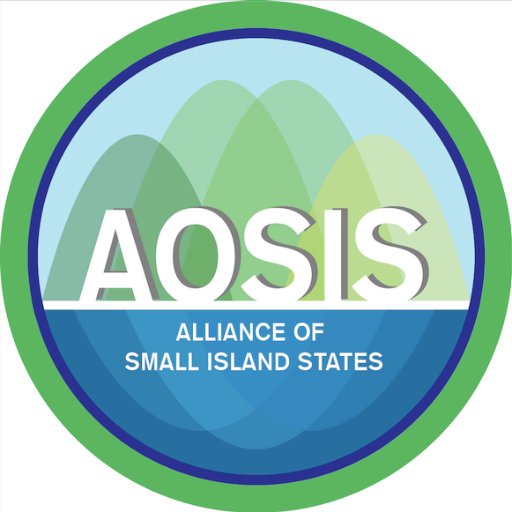Second Committee Special Event on
“A crisis mitigation and resilience building mechanism for LDCs, LLDCs and SIDS”
30 October 2015
Intervention
Distinguished Chair, Mr. Moderator, Panelists, Excellencies, Colleagues,
Firstly, I wish to thank the Bureau of the Second Committee and the USG of UNOHRLLS for organizing this Event, which comes at a time for all of us when we are constantly being reminded of our reality. For the SIDS it has been a traumatic year, not but a month ago the Commonwealth of the Bahamas was severely battered by Hurricane Joaquin, a month prior, in August, the Commonwealth of Dominica was devastated by Tropical Storm Erika, and earlier this year Vanuatu along with other Pacific countries, was virtually destroyed by Cyclone Pam. Typhoon Maysek and Dolphin caused extensive damage in the Federated States of Micronesia. These three events not only claimed lives and greatly disrupted life on these Islands, but caused tremendous infrastructural damage costing in the hundreds of millions.
I wish to offer my sympathies to all countries affected. I also offer our support and solidarity to all our Asian neighbours that suffered from the recent earthquake.
Madam Chair
These disasters are stark reminders of why this year’s activities at the United Nations are critical for all of us and why we have been and continue to be so visible and engaged in all the processes – the Sendai Conference on Disaster Risk Reduction, Addis conference on Financing for Development and the 2030 Agenda for Sustainable Development. And we look forward to the forthcoming COP21. By the end of this year we would have finalized the multilateral frameworks through which disaster risk reduction, sustainable development, financing for development, and climate change action can be fully and effectively addressed in the coming years. We have to ensure coherence throughout these processes, due to their close inter linkages, while keeping in mind the respective and distinct mandates for each.
Madam Chair
According to the 2015 Global Assessment Report on Disasters, expected losses from disasters associated with earthquakes, volcanic hazards and risks, tsunamis, tropical cyclone winds, storm surges and flooding are now estimated at 300 billion US dollars annually.
Disasters violently undermine our progress towards sustainable development, and pose a particular threat to SIDS. Our small size, geographic isolation, narrow resource base, and exposure to global environmental challenges and external shocks make it challenging to prepare for disasters before they strike and exceptionally difficult to recover in their aftermath.
As SIDS, we do not and cannot think of disaster risk reduction in isolation from climate change, and this is why the Paris COP remains of particularly high importance to us. For us, increasing impacts of human-induced climate change have only added to the challenge of disaster risk reduction. The Intergovernmental Panel on Climate Change has warned of increased and more severe extreme weather events, such as heat waves, droughts and floods, as a result of climate change. What’s more, sea level rise, more frequent and intense storms, coastal erosion, and saltwater intrusion from human-induced climate change will only compound the challenges we already face from natural disasters.
Scientists are warning us that the policy space available to reduce the impact of disasters is becoming smaller. Impacts from disasters go beyond direct deaths, and have wider and disproportionate implications on the socio-economic order in SIDS. It affects our livelihood and the well being of our peoples and communities. Given our limited resources, we then remain highly concerned of our capacity to cope with and meet the challenges from the projected increase in extreme weather events.
Madam Chair,
In the SAMOA Pathway, the international community again recognized these realities that SIDS face, and once again reaffirmed its commitment to SIDS. We also identified the critical need to build resilience, strengthen monitoring and prevention. We noted the need to reduce vulnerability, raise awareness, and increase preparedness in SIDS to respond and recover from disasters.
Even though several of us have integrated disaster risk considerations into national development plans and policies, we are already spending significant amounts of public funds on resilience building and climate adaptation. We have the political commitment to institutionalize disaster risk reduction.
But the reality is we can’t do this alone and need the financial, technical and capacity building support of the international community to respond to the increased risks we face. We have been fortunate for crisis mitigation mechanisms such as the CCRIF it was a pleasure to listen today to the detailed presentation from Mr. Isaac Antony, the Executive Officer about the initiative. Two other similar mechanisms also exist in the Pacific and the Indian Ocean regions namely the Pacific Catastrophe Risk Assessment and Financing Initiative (PCRAFI) and the Southwest Indian Ocean Risk Assessment and Financing Initiative (SWIO RAFI), respectively.
These mechanisms, as have been outlined Mr. Isaac Antony, provide some of the needed buffers pre- and post-disasters. However, we still have to rely on our developed partners to assist us, by forging genuine and durable partnerships, through fulfilling their existing commitments, as well as assist with the mobilization of new resources to build the resilience of vulnerable nations. As such, we continue to stress on the need for financial resources for disaster risk reduction and climate change adaptation initiatives in SIDS. We also call for the strengthening of risk insurance facilities at international level to support SIDS and other particularly vulnerable nation states to manage financial risk from natural disasters.
In closing, Madam Chair, SIDS once again reiterates that in order for us to successfully implement any of these important mandates, especially the 2030 Agenda, which emphasizes on “ leave no one behind” the Means of Implementation must include adequate, predictable, sustainable and additional financing, technology transfer, and capacity building. We strongly believe that through better international coordination and cooperation we can make great strides in building resilience and reducing risks associated with disasters. Thank you.



